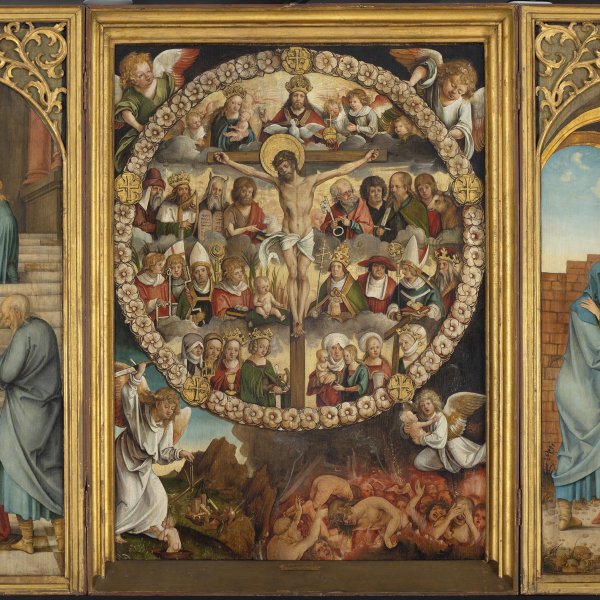Hans Suess Kulmbach
Kulmbach (?), ca. 1485 -Nuremberg, 1522
Hans Suess von Kulmbach was born around 1485, probably in Kulmbach in Upper Franconia, from where he took his name. According to Johann Neudörfer (1875), the first biographer of the Nuremberg artists, Kulmbach initially trained with the Venetian painter and printmaker Jacopo de’Barbari who was in Germany between 1503 and 1504, working as official painter to Frederick the Wise, Prince Elector of Saxony. It would seem that having completed his apprenticeship, Kulmbach moved to Nuremberg to Dürer’s studio. Joachim von Sandrart wrote in his Teutsche Akademie of 1675 that Kulmbach’s talents resulted in his rapid promotion in the studio and that Dürer appreciated him and used him for various projects. He became a citizen of Nuremberg in 1511 but his early drawings suggest that he was already present in that city around 1504 or 1505.
The Adoration of the Magi (Gemäldegalerie, Berlin) of 1511 is the first work to include the mongram “HK”, suggesting that it was around this date that Kulmbach became an independent master and ran his own workshop. Over the following years the artist focused on the production of altarpieces, a field previously dominated by Michael Wolgemut, and his workshop became the leading one in Nuremberg. In 1513 he executed his most important work in the form of a votive painting of large size dedicated to Lorenz Tucher (church of Saint Sebald, Nuremberg), considered by many art historians to be one of the best and most perfect works of the German Renaissance. In addition to religious painting, Kulmbach painted portraits of which only a few have survived. He was also a leading designer of stained-glass windows and was responsible for the new popularity of this medium in Nuremberg.
The Adoration of the Magi (Gemäldegalerie, Berlin) of 1511 is the first work to include the mongram “HK”, suggesting that it was around this date that Kulmbach became an independent master and ran his own workshop. Over the following years the artist focused on the production of altarpieces, a field previously dominated by Michael Wolgemut, and his workshop became the leading one in Nuremberg. In 1513 he executed his most important work in the form of a votive painting of large size dedicated to Lorenz Tucher (church of Saint Sebald, Nuremberg), considered by many art historians to be one of the best and most perfect works of the German Renaissance. In addition to religious painting, Kulmbach painted portraits of which only a few have survived. He was also a leading designer of stained-glass windows and was responsible for the new popularity of this medium in Nuremberg.





